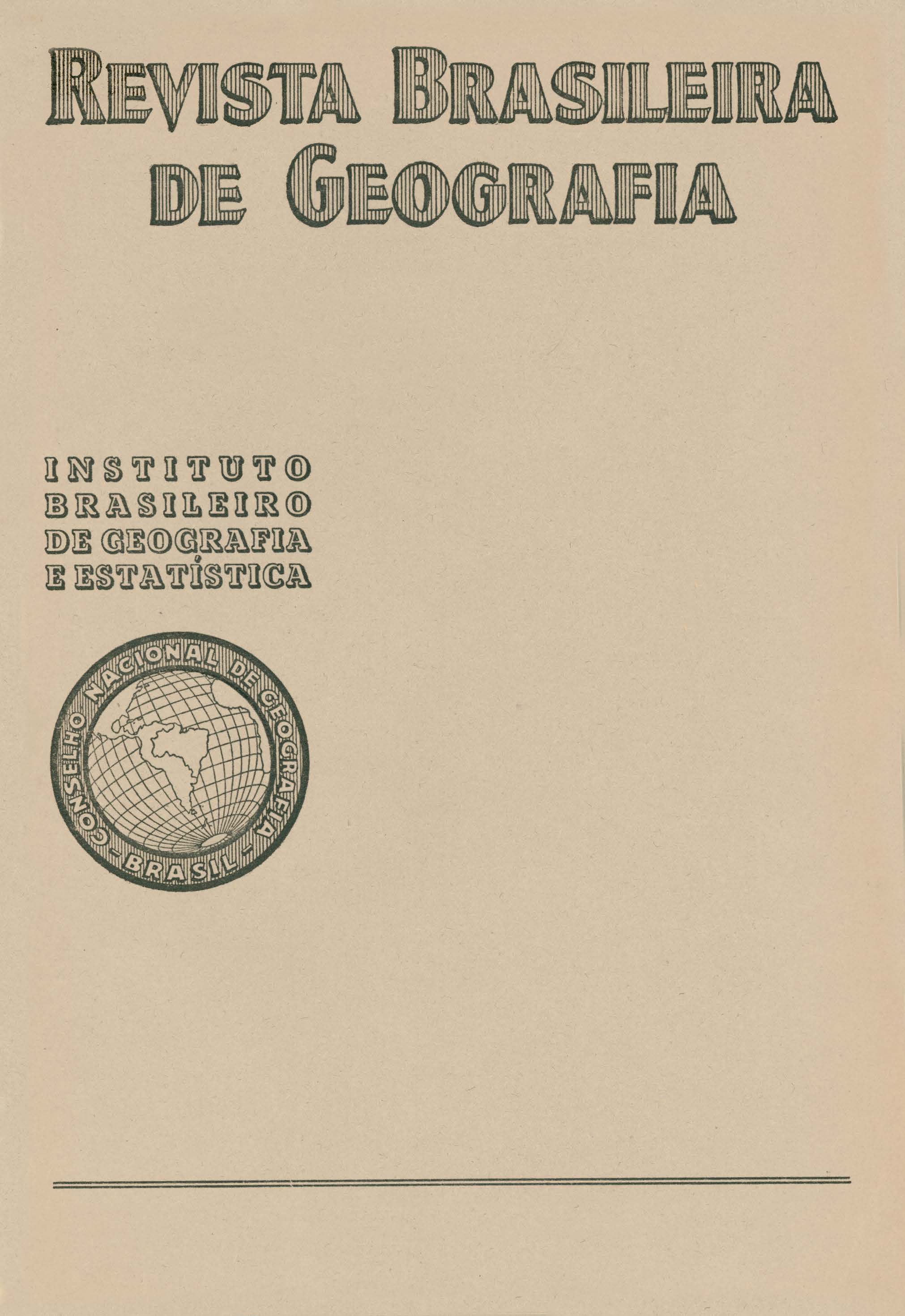Fauna amazônica
Palavras-chave:
Amazônia;, Zoogeografia;, Animais.Resumo
The author, technical adviser to the National Council of Geography, deals in this article with the Amazonian fauna.
He gives the zoogeographical divisions developed by Slater (1857) and Wallace (1876) who divide the world into 6 large regions. Of these, the Neotropical region comp1ises all the America between the 25: N and the 55 o parallels. Next he analyses Sclater's, Salvin's and Newton's subdivisions comprehending 4 sub-regions. Wallace presents only 2 sub-regions, a viewpoint which is followed by Trouessart and the more modern authors. However, the limits adopted by zoogeographers are not coincidental.
He then transcribes a description of the Brazilian sub-region after Wallace's and, although the text of it does not specify the limits, by the examination of his map one, may consider the following: to the north, Darica hills; to the west, the Pacific coast from the gulf of Panamá to a little fa1th81 south of the Guayaquil gulf; thence a very oblique line starting from Ryta, ascending to the sources of the Napó and descending along the buttresses of the easte1n cordillera (Preandes) down to Santa Cruz de -la Sierra, where the line approaches slightly near the cordillera to teach Salta. Thence it proceeds abruptly flexuous to form the southern boundary: this limit is given as a winding line which ascends up to Chuquisaca then to come down by the southe1n boundary with Paraguay, encompassing the Argentine territory of Missiones and reaching the Atlantic by the channel which connects Lagoa dos Patos to the ocean.
Trouessart's limits for the sub-1egion a1e similar to those outlined by Wallace.
In studying the Neotropical region Neuville divided it into 2 sub-regions stating that the boundary lines between the Patagonian and the B1azilian-Guyano sub-regions a1e indecisive and that the faunas intermingle
The name of Brazilian-Guyano sub-region was given by Sclater and is followed by Neuville and by Cabrera and Yepes However, the author of this article accepts the designation given by Wallace and Trouessart.
To the other subdivision which Wallace and Sclater called Chillian, Cabrera and Yepes opposed that most of the species of this sub-1egions ate to be found in the Patagonian desert and eastern valleys of the Andes, and in taking in to consicle1ation the observed facts they call it Patagonian. Because the region •extends throughout the Cordillera and that its plain region includes not only Patagonia but also La Pampa, the author prefe1s to call it Andino-Patagonian.
Acording to the author we may establish for the Brazilian sub-region the following boundary distinctions: to the North, the Caribbean sea, so as to include in this sub-region the Sotavento islands and the Atlantic Ocean which also bounds it on the west as far as the mouth of the River Plate this river and the Paraná bounds it on the south and on the west until more or less the mouth of the Salado river. Accompanying the valley of this liver and that of the Juramento the line ascends almost straightly up to Bolivia along the eastern limits of the inne1 valleys and zones of median elevations in Argentina, Bolivia, Ecuador, Peru and Colombia, finally 1eaching the Antilles sea through the Magdalena basin.
After presenting the old Provincial division, the author arrives at the conclusion that one may consider 5 provinces Cariba, Hiléa or Amazonian, Cari1i, Tupi and Guarani which approximately correspond with the districts adopted by Cabrera and Yepes.
He then fixes the boundaries of the Amazonian province: to the northeast, the Atlantic Ocean, f1om the mouth of the Oiapoque to that of the Turiassú; to the north, the butt1ess forms of the mountain ranges of the Parima system, comprising Maroni, Essequibo and Orenoco basins, and passing by the south of the Cordillera of Merida; to the west, the bounda1ies run between the Brazilian and the Andino-Patagonian sub-regions, right from the junction of Cordillera of Merida with the Eastern Cordillera, and along the sources of the Amazon river and its t1ibutalies to as far as the north of Bolivia to the east and to south, a line runs along the Turiassú basin to 1 each the Tocantins basin and the other ciliaries o f the affluentes on the southern margin of the Amazon.
In all the groups of animals the Hiléa shows their own peculiar and characteristic forms. This is what the author shows when he supplies us with a list giving a view of the Amazonian fauna as a whole.
In this list he p1esents the geographical distribution of the va1ious species He shows that in the Amazonian fauna there is taking place an adaptation of animal life to plant life in which one finds a high number of characteristic species.






